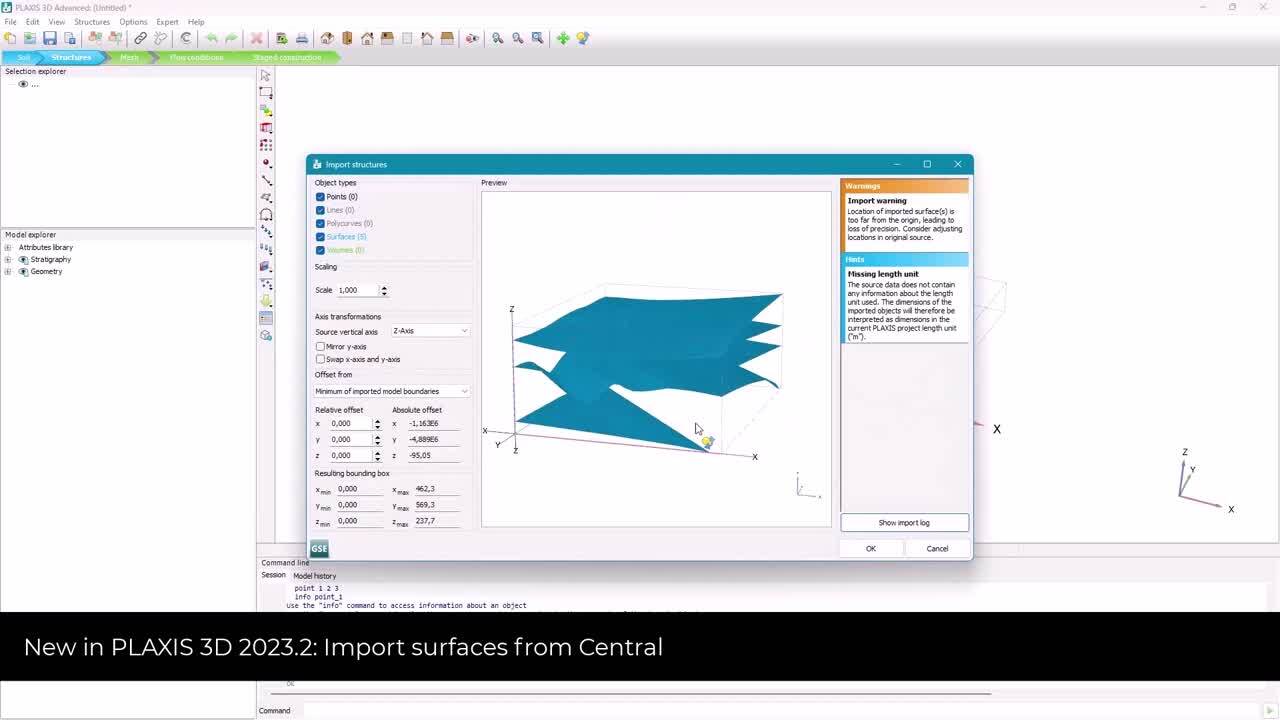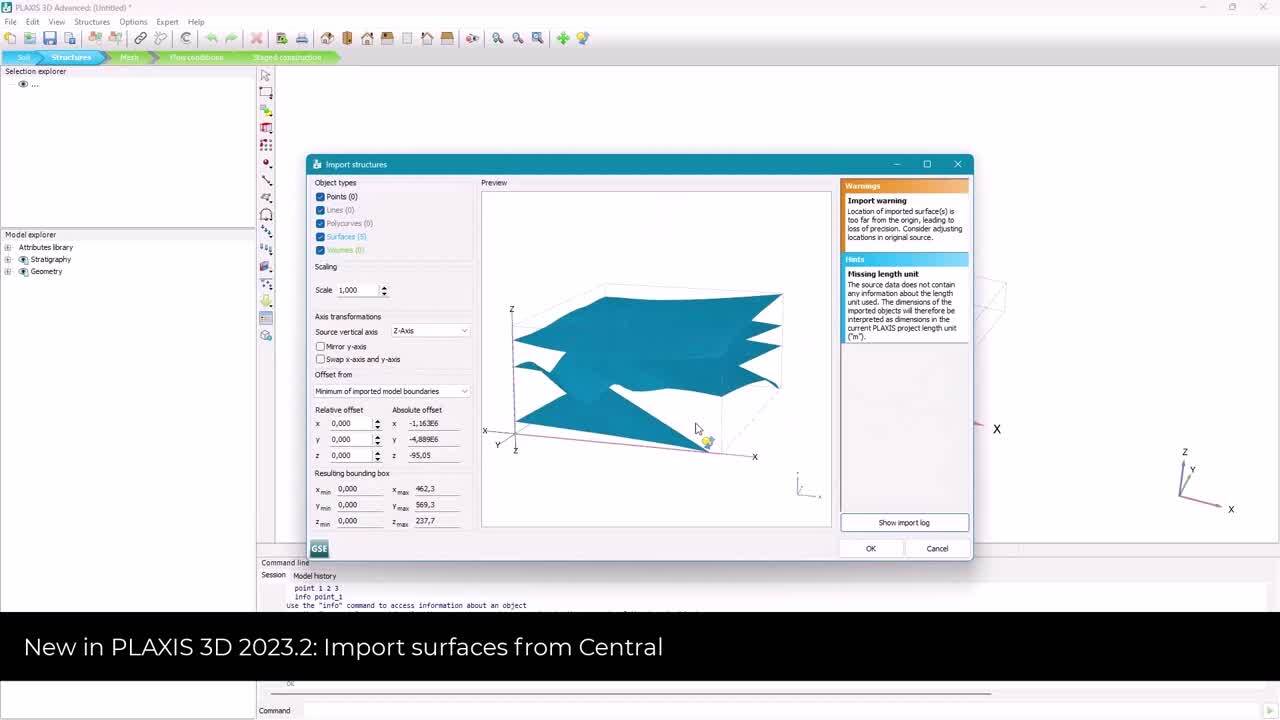This latest release solidifies Seequent's Connected Geotechnical Workflow, reducing the need for duplicate entry of data across several software packages.
Import of Leapfrog surfaces from Seequent Central
The 2023.2 release introduces the new “Import surfaces from Central” option. The workflow begins with Leapfrog, creating a 3D geological model. This model and cross sections can be published to Seequent Central. Once the Leapfrog project is on Seequent Central, PLAXIS 3D can import data from it. This allows users to access the latest geological contact surfaces and topography from a version-controlled cloud-based source, serving as a basis for creating PLAXIS 3D models.
Export to GeoStudio 2D and import from GeoStudio 2D
As part of the Connected Geotechnical Workflow, users now benefit from a smoother bi-directional transition of geometry between Limit Equilibrium and Finite Element Analysis, with new import and export capabilities in PLAXIS 2D, avoiding repetitious and error-prone re-entry of model data.
Modelling reinforcement with Cable elements
The new cable element and cable material type are introduced. Cables can be used to simulate rock reinforcement like grouted cables or frictional/grouted bolts that work mostly in tension and/or compression.
Enhancements for Seequent’s Connected Geotechnical Workflow
The previous release, enabled a connected geotechnical workflow from Leapfrog to PLAXIS 2D, by introducing the option to import 2D cross-sections from Seequent Central, published by Leapfrog. In this release the import of cross sections from Central is enhanced by including formation names and colours, allowing easier visual matching and comparison between Leapfrog, Central and PLAXIS 2D.
Overview
Speakers
The PLAXIS Team
Duration
6 videos, 7 minutes

